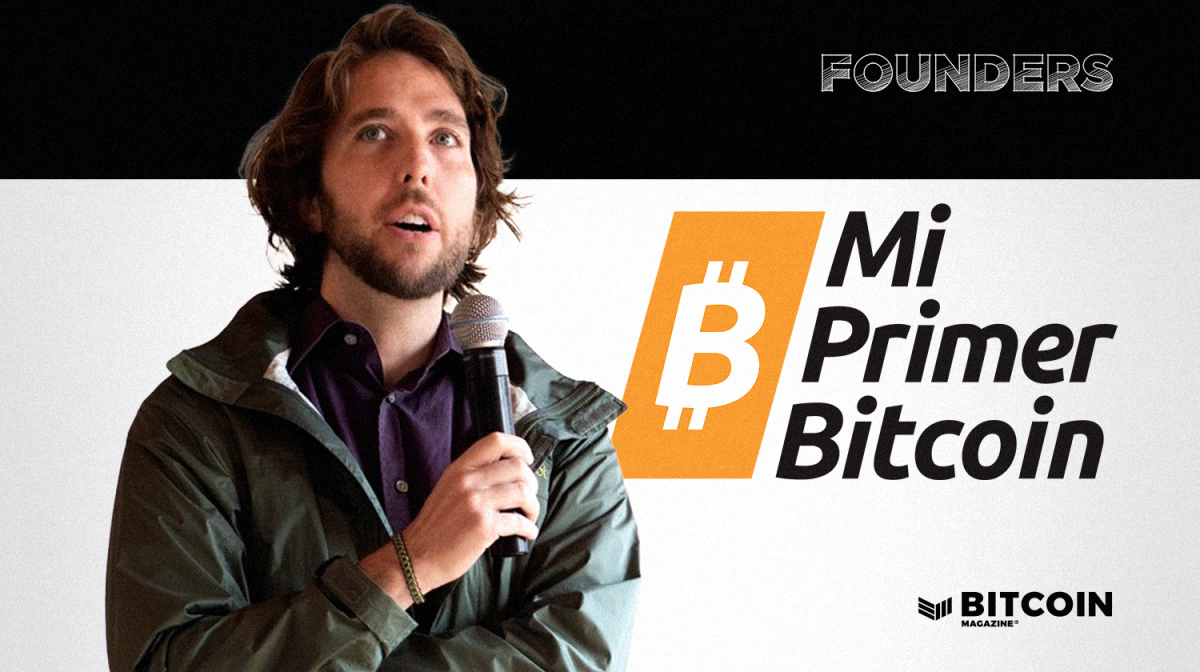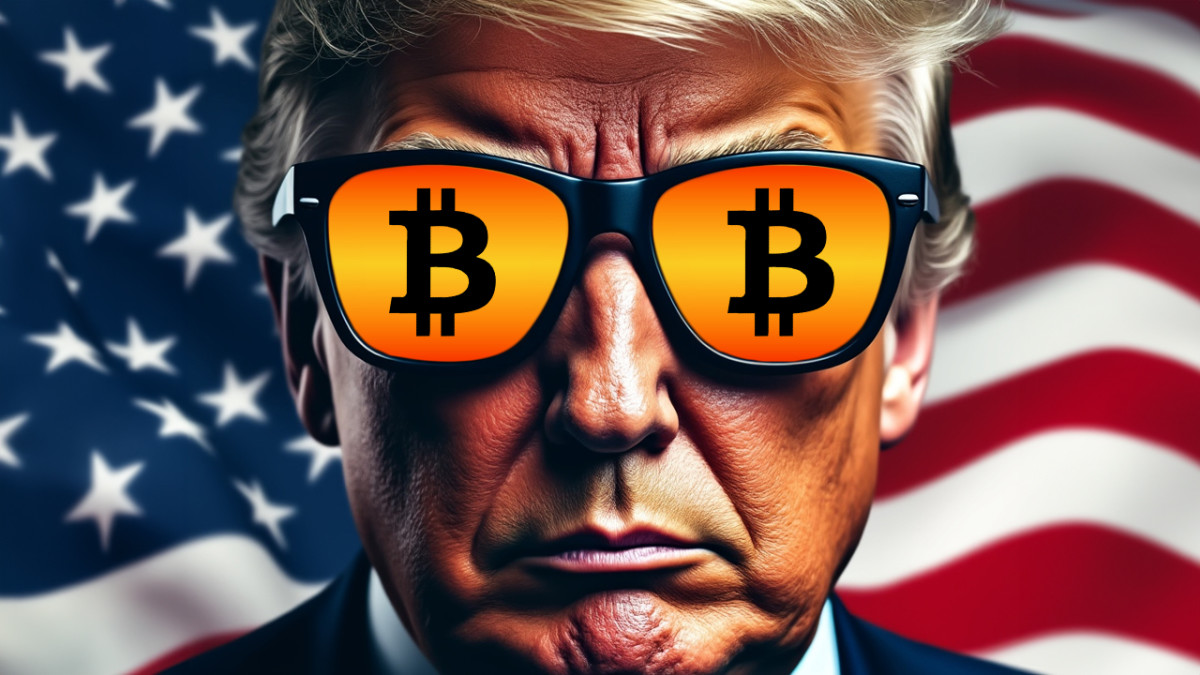Exploring how Bitcoin’s non-confiscatable nature will introduce a paradigm shift in dispute resolution and the civil justice system.
Conflict is part of human nature. Civilizations are defined by how they resolve disputes. Hamurabi’s code was notorious for its merciless application of “an eye for an eye.” Autocrats from King Solomon to James I meted out rough justice in royal courts, often arbitrarily, and with no opportunity for further review. And without even these harsh systems, individuals were left to fend for themselves, resorting to violence to resolve interpersonal conflict.
The rise of the civil justice system marked a welcomed turn toward fairness and peaceful rationality in dispute resolution. To be sure, this system is still backed by the sovereign’s monopoly on violence, but it provides for an amicable adjudication of claims based on evidence and argument given by all litigants, as well as judgments that are reviewable for error. Wrongs are remedied not through vengeance, but compensation. The civil justice system seeks to make the injured party whole. And it does this by shifting value from the liable party to the injured party through money judgments.
But a new dispute resolution epoch is upon us. Bitcoin is changing our relationship to money. It is in the process of disintermediating the financial system by replacing trusted third parties with peer-to-peer electronic cash that travels over an open-source, decentralized and permissionless protocol. Overlooked by many, however, is that this same process of disintermediation is affecting the civil justice system. As Bitcoin changes our relationship to money, it also changes our relationship to the court system. This transition will not be painless.
This essay explores the ways in which Bitcoin is affecting the civil justice system, and the system’s response. Primarily, Bitcoin’s seizure resistance threatens the enforceability of money judgments. To countervail Bitcoin, courts will resort to increasingly harsh methods of maintaining the efficacy of money judgments. These methods include the nuclear option that is the Mareva injunction, which was recently leveled at bitcoiners fundraising for the Ottawa freedom trucker protests in Canada. Proliferation of these due-process-annihilating judicial weapons will likely continue as Bitcoin adoption grows.
This weaponization of the civil justice system, however, need not be permanent. Bitcoin can be both a catalyst and a platform for new, fairer dispute resolution paradigms.
To begin, let’s establish the specific civil justice mechanisms that Bitcoin is affecting.
Bitcoin Is Disintermediating The Civil Justice System
Third-Party Financial Intermediaries Are The Linchpin Of The Civil Justice System
Civil justice systems primarily exist to peacefully resolve disputes between individuals (and, to a lesser degree, between individuals and the government). Those disputes take many forms (contractual, property, tort), but the most common remedy is compensatory damages — money. While not perfect, the money judgment is the best means so far devised to compensate an injured party and remedy a wrong. In other words, the money judgment is essential to the administration of civil justice.
Money judgments are not the end of the legal process, although they may mark the end of formal litigation. The party in whose favor the judgment was entered, called the “judgment-creditor” (usually the plaintiff that won), must enforce the judgment against the “judgment-debtor” (usually the defendant that lost).
Sometimes, the judgment-debtor will simplify the process by voluntarily paying up. But when judgment-debtors are recalcitrant, the judgment-creditor is forced to seek out and collect the judgment-debtor’s assets to satisfy the judgment.
The law furnishes to the judgment-creditor a handy device to collect assets called a “writ of garnishment.” A court issues the writ to the judgment-creditor, who then serves it on a third party in possession of the judgment-debtor’s assets (usually a bank, custodian or other financial services provider). These third-party intermediaries have no incentive to fight a writ of garnishment and will usually just wait to see if anyone objects, and then hand over the assets in their possession after all objections are resolved. After all, the writ of garnishment is enforcing a judgment entered after a full and fair opportunity for the third party’s customer to exculpate themselves. These highly-regulated entities must respect the authority of the courts to adjudicate disputes.
Thus, by facilitating the transfer of assets from judgment-debtors to judgment-creditors in satisfaction of compensatory damages awards, third-party financial intermediaries have become the linchpin of the civil justice system.
Bitcoin Disintermediates Custodians And Counterparties
Bitcoin has created a paradigmatic shift in property rights.
By storing wealth in bitcoin, one need not rely on counterparties or the courts to protect one’s property. This is because bitcoin is a bearer asset that allows for self custody.
But unlike a physical bearer asset like gold, large amounts of which are very costly to defend, bitcoin is trivially inexpensive to secure on an individual level. All that’s required is a wallet (hardware or software) that stores private cryptographic keys used to transact on the blockchain.
Moreover, transactions on the Bitcoin network are entirely decentralized and do not rely on trusted third-party intermediaries. Bitcoin achieves this with a distributed ledger that is updated and verified by thousands of computers (or nodes) throughout the world running Bitcoin’s open-source software. Transactions that don’t comply with Bitcoin’s rules are rejected by the nodes, thus preventing double-spends.
Because Bitcoin is both a digital bearer asset that allows self custody and an open, decentralized, permissionless network, it is the first truly seizure resistant store of value.
When The Linchpin Slips, The System Will React
Now, imagine a world on a full Bitcoin standard, where everyone self custodies their own wealth. In this world of hyperbitcoinization, financial intermediaries would be obsolete. In turn, the traditional pressure point for enforcing money judgments would cease to exist. Alternative methods of enforcement would need to be employed to resolve disputes. Indeed, “unless a creditor’s judgment can be enforced, liability is merely symbolic, a status that risks undermining the legitimacy of the legal system and increasing the cost of credit.”
That world is unlikely, at least anytime soon. Financial intermediaries will not go extinct. The more likely trajectory (presaged by early contributor Hal Finney and later mapped out by Saifedean Ammous, Nik Bhatia and Nic Carter, among others) will see Bitcoin serve as the unimpeachable base layer of money, a reserve asset that backs other forms of money, like the U.S. dollar, bank deposits or stablecoins. There will always be a place for financial intermediaries. And so there will always be third parties upon whom writs of garnishment can be served in satisfaction of money judgments.
But as Bitcoin adoption increases (true adoption, with users holding their own cryptographic keys), reliance on intermediaries will decrease. The linchpin of the civil justice system will slip.
Courts and legislatures will eventually wake up to this gradual shift. In the short-to-medium terms, the civil justice system’s response will be focused on maintaining the status quo by ensuring the collectability of money judgments. To countervail Bitcoin’s seizure resistance, therefore, money judgments must be secured through a combination of:
- Decreased due process, and
- Increased coercion
Thus, as discussed more fully below, the transition to a Bitcoin standard will be profoundly destabilizing for the civil justice system, and particularly painful for early adopters.
Decreased Due Process Through Pre-Judgment Seizures And Asset Freezes
How does a plaintiff collect an asset, like bitcoin, that is held personally by a defendant, and which can be dissipated before judgment is granted? One way is to seize or freeze the defendant’s assets before they know a lawsuit has even been filed. This tactic poses a grave threat to due process as outlined in Amendment XIV of the U.S. Constitution, the right to notice and an opportunity to be heard before one’s property is seized.
“It has long been recognized that fairness can rarely be obtained by secret, one-sided determination of facts decisive of rights. And no better instrument has been devised for arriving at truth than to give a person in jeopardy of serious loss notice of the case against him and opportunity to meet it.”
–“Fuentes v. Shevin,” 407 U.S. 67,81 (1972) (cleaned up)
For this reason, the use of pre-judgment asset freezes and seizures is constrained — in the U.S., at least — by due process and traditional notions of equity.
But a civil justice system threatened by increasing adoption of an uncollectable asset will be incentivized to loosen such constraints. Even before the advent of Bitcoin, certain jurisdictions had begun to authorize broad pre-judgment asset freezes to fight traditional methods of judgment proofing. Let’s consider one of these existing tools and its application to Bitcoin, the Mareva injunction.
The “Nuclear Weapon Of The Law”
The Mareva injunction, first devised in an eponymous English decision, is an onerous pre-judgment remedy now authorized by statute in many commonwealth jurisdictions. Dubbed the “nuclear weapon of the law,” the Mareva injunction is specifically designed to avoid the possibility of dissipation before judgment by freezing “assets of a defendant to ensure that a plaintiff’s final judgment will not go unsatisfied.”
The Mareva injunction is issued ex parte — meaning without notice to the defendants. The defendant often does not even know an action has been commenced. This allows the court to order financial intermediaries to freeze defendants’ known assets before they can be shielded. The injunction also forces banks and custodians “to assist the plaintiff in ‘tracing’ any other assets the defendant may have.”
Failure to comply with the order (by either defendants or intermediaries) will be met with harsh sanctions including fines, preclusion from defending the merits of the action and even imprisonment. Moreover, these orders apply globally, to assets outside the jurisdiction of the court issuing them.
Once the defendant’s assets have been frozen (and they have finally been apprised of the action) they may apply to the court for an allowance for living expenses, in an amount to be determined in the court’s sole discretion.
The Mareva injunction thus allows plaintiffs to wage total war on defendants’ finances in secret, systematically depriving defendants of their property and reducing them to wards of the state. And it does this before the validity of a plaintiff’s claimed injuries have been vetted in an adversarial proceeding, and well before the defendant has been adjudicated liable. The Mareva injunction drastically tilts the playing field in favor of creditors and plaintiffs by depriving defendants of their ability to finance their defense.
This startling disregard for basic due process is why most American courts and commentators have, until now, resisted the use of broad Mareva-type remedies in the United States.
U.S. Proliferation
In the United States federal court system, if a plaintiff thinks the defendant will be able to render themselves judgment-proof by dissipating or shielding funds before judgment, their options are limited to temporary restraining orders, or TROs. Like a Mareva injunction, TROs are issued without notice to the defendant, and can be used to freeze assets, preventing dissipation under penalty of contempt of court.
But unlike Mareva injunctions, a plaintiff can only qualify for a TRO under narrow circumstances by showing “that immediate and irreparable injury, loss, or damage will result to the movant before the adverse party can be heard in opposition.” And current precedent largely holds that “monetary injury is not normally considered irreparable.” TROs are not currently an effective Bitcoin countermeasure.
But as it becomes harder to recover bitcoin in the aggregate due to decreasing use of intermediaries, U.S. courts may begin to relax the constraints on pre-judgment asset freezes in the name of combatting rampant dissipation, and concede to the introduction of Mareva injunctions.
Justice Ruth Bader Ginsberg, dissenting in a 1999 case called “Grupo Mexicano de Desarrollo S.A. v. All. Bond Fund, Inc.,” advocated for granting trial judges increasingly “flexible jurisdiction in equity” to issue preliminary injunctions aimed at preventing the “manifestly unjust result” of uncollectible money judgments. Justice Ginsberg reasoned that “the increasing complexities of modern business relations” justified an expansion of equitable remedies like pre-judgment asset freezes, which had not been necessary previously in the “age of slow-moving capital and comparatively immobile wealth.” Indeed, even before Bitcoin, commentators had been warning of the death of the civil justice system for decades due to “the introduction of computer technology” that makes judgment-proofing techniques “cheaper and easier to execute.”
Ultimately, a majority of the Supreme Court in “Grupo Mexicano de Desarollo” rejected the use of Mareva-style injunctions, holding that federal courts have “no authority to issue a preliminary injunction preventing [defendants] from disposing of their assets pending adjudication of” plaintiffs’ claims for money damages. Justice Scalia, writing for the majority, offered this quote:
“A rule of procedure which allowed any prowling creditor, before his claim was definitely established by judgment, and without reference to the character of his demand, to file a bill to discover assets, or to impeach transfers, or interfere with the business affairs of the alleged debtor, would manifestly be susceptible of the grossest abuse. A more powerful weapon of oppression could not be placed at the disposal of unscrupulous litigants.”
But the year 1999, compared to a world with Bitcoin, seems like a bygone “age of slow-moving capital and comparatively immobile wealth,” with no need for aggressive pre-judgment asset freezes. It does not take much imagination to envision Bitcoin being used as a scapegoat (the ultimate judgment-proofing tool) to justify expanding the use of TROs to freeze assets for later collection. While the current makeup of the Supreme Court is sufficiently similar in judicial philosophy to the majority in “Grupo Mexicano de Desarollo,” that will not always be the case.
And, if the Supreme Court doesn’t expand trial courts’ pre-judgment powers, Congress always can. To countervail the growth of self-custodial bitcoin, Congress could import weapons from across the pond by passing a version of the Mareva injunction statute.
Case Study: ‘Happy Goat Coffee Company, Inc. V. Freedom 2022 Human Rights And Freedoms’
So, in the face of such a draconian judicial weapon, what options are available to preserve rights to due process and property? In fact, a preliminary skirmish has already occurred between the existing civil justice system and Bitcoin, from which we can better understand the contours of the coming conflict. In a case styled “Happy Goat Coffee Company, Inc. v. Freedom 2022 Human Rights and Freedoms,” a Mareva injunction was recently directed against organizers and donors of the Ottawa freedom truckers convoy in Canada:
The injunction was issued in support of a class action lawsuit brought by Ottawa business owners against donors and organizers, some of whom were utilizing Bitcoin and multi-signature wallet solutions to receive and send donations. Unfortunately, the organizers’ laudable desire for transparency was turned against them.
Bitcoin addresses were re-used and made public, as were the identities of those organizers holding the private keys. With identities mapped to addresses, it was trivially easy for plaintiffs to trace and locate the donated bitcoin on the transparent blockchain. The Mareva injunction listed the known Bitcoin addresses for donors and organizers, and also listed various platforms/exchanges that were utilized. Well-known Bitcoiners who had shared control of the private keys to one of the donation addresses through a multi-signature wallet were also listed as “custodians.” The injunction restrained all defendants and listed intermediaries from dissipating or transferring bitcoin from the listed addresses, under penalty of imprisonment, fines or asset seizure.
To date, this is one of the most prominent examples of a civil pre-judgment asset freeze of bitcoin. And it is a particularly concerning example of the civil justice system being weaponized by private parties for political purposes. Recall, this injunction was not issued by the Canadian government in an attempt to quell the protest, but by private business owners who brought a class action. These business owners have yet to produce any evidence of their injuries or a cognizable right to a money judgment. And yet, every Bitcoin address that received donations to this political movement was frozen. (And those donors with addresses mapped to their personal identifiable information risk punishment if they defy the order, as well.)
Justice Scalia’s warnings ring true: “A more powerful weapon of oppression could not be placed at the disposal of unscrupulous litigants.”
The freedom truckers Mareva injunction was an air-raid siren sounding the start of a nuclear era of civil litigation against Bitcoiners. It sets a precedent for all civil plaintiffs to follow, encouraging proliferation of this most abhorrent judicial device.
But the freedom truckers Mareva injunction also reveals the current civil justice system’s shortcomings in addressing self custody. That is, the injunction still pulled on the traditional levers of judgment enforcement: intermediaries. Cryptocurrency exchanges were served with the injunction and ordered to freeze assets held by the named defendants or connected to the addresses from which donations were made. These third-parties functioned as the standard linchpin of the civil justice system, obeying the order.
The bitcoin in personal wallets, secured by private keys, however, remained beyond the reach of the courts and in the custody of the donors and organizers. To be sure, identified owners of the listed bitcoin still risk punishment under the Mareva injunction if they transfer or sell their bitcoin. But for those donors who remained pseudonymous by observing privacy best practices, enforcement is a hollow threat.
An important lesson thus emerges. Within a civil justice system that allows defendants’ assets to be traced and frozen before the defendants are even aware of an action, defendants can reclaim due process by rendering their assets untraceable. Just as its self-custodial nature can shield it from being seized, Bitcoin’s pseudonymous nature can shield it from being frozen. But individual Bitcoiners must assiduously cultivate privacy by using the available tools, demanding more privacy-focused solutions from the industry, and promoting a cultural norm of privacy by default.
Increased Coercion Through Post-Judgment Contempt Powers
As demonstrated by the freedom trucker Mareva injunction, freezing assets is only the first half of the puzzle. The ultimate goal is to transfer the frozen assets from the judgment-debtor to the judgment-creditor after final judgment has been entered. This process is known as “enforcing the judgment.” But without an intermediary for the judgment-creditor to garnish, the bitcoin-holding judgment-debtor must be convinced — or coerced — into relinquishing their private keys to satisfy a money judgment.
In the United States, coercion takes the form of in personem debt collection tools aimed at the judgment-debtor themselves (as opposed to in rem tools aimed at the assets). A judgment-creditor can serve a subpoena on the judgment-debtor, directing them to answer questions about their assets under penalty of perjury. Or the judgment-creditor can obtain an order forcing the judgment-debtors to turn over known money or property directly to the judgment-creditors.
A judgment-debtor that fails to comply with such orders can be held in contempt of court, meaning they can be fined or imprisoned until they supply the requested information or turn over the identified money or property to satisfy the judgment.
Current constraints on in personem remedies are either statutory or judge-made, and vary from state to state. Some states require a judgment-creditor to unsuccessfully attempt in rem execution first before resorting to in personem remedies, while others allow in personem debt collection as soon as a money judgment is rendered.
Surprisingly, debtors’ prisons are not prohibited by the federal constitution. Nevertheless, a federal statute does bar federal courts from imprisoning defendants for debt “in any State wherein imprisonment for debt has been abolished.” And some states, such as Florida, have, indeed, abolished imprisonment for debt. Only about one third of states allow contempt against judgment-debtors for refusal to turn over assets.
But statutes and state constitutions can be amended (or reinterpreted) with comparative ease. The evolution of the court’s current in personem post-judgment enforcement powers provides an example of the civil justice system’s adaptability in the face of novel forms of property.
At early common law in rural societies, in rem execution of judgments against property satisfied creditors’ needs because wealth was held in immobile, tangible and transparent real estate and chattels. There was no need to coerce the debtor through threat of imprisonment because the sheriff could enforce a writ of execution by forcibly seizing such property in the event a debtor refused to turn over their assets.
But as new forms of intangible or equitable property arose (think stock certificates, bonds and other debt instruments), the old in rem remedies proved less and less effective at enforcing judgments. Necessity is the mother of invention, and thus the in personem judgment enforcement remedies were born, allowing judgment-creditors to discover and compel the turnover of personal and hard to reach property.
Bitcoin is the ultimate form of intangible property. But in personem remedies were created to overcome enforcement challenges presented by just such incorporeal stores of wealth. The civil justice system has the tools to countervail Bitcoin’s seizure resistance (blunt though they may be), they need only be made more readily available. State-sanctioned coercion, especially the threat of indefinite imprisonment, is very difficult to resist. Faced with contempt proceedings, judgment-debtors who self-custody bitcoin will hold the cryptographic keys to their own jail cells.
Conclusion: Is Bitcoin A Catalyst For A New Dispute-Resolution Paradigm?
The Western civil justice system has endured for centuries by remaining dynamic and flexible in the face of threats to the money judgment. It would be naive to think that seizure-resistant bitcoin will sound the death knell of that system of liability. The aim of this essay has been not to cheerlead for that outcome, but to identify likely pain points as the civil justice system transitions in response to Bitcoin. Some form of rights enforcement must persevere if we are to live in a civilization possessed of the rule of law and peaceful dispute resolution.
The absence of enforceable liability is anarchy. An injured party who cannot turn to the courts for redress may resort to a $5 wrench attack instead. Bitcoin may be seizure resistant, but people are quite susceptible to coercion by violence.
Preparing for the civil justice system’s proliferation of coercive in personem tools and pre-judgment deprivations of wealth requires a multi-layered approach.
The first layer is individual. As previously mentioned, individuals can reclaim due process by acquiring, holding and using bitcoin as privately as possible. Plaintiffs cannot freeze defendants’ assets if they don’t know about them. Privacy means different things to different people, and involves a spectrum of trade-offs, but ensuring bitcoin remains unmapped to one’s personal identifiable information is crucial to avoiding being burned in the financial conflagration of a Mareva injunction.
The second layer is communal. The Bitcoin community as a whole needs to promote, foster and build a peer-to-peer circular economy. This will help Bitcoiners avoid gated on- and off-ramps like centralized exchanges, which can be co-opted to inform on defendants or freeze and seize assets.
This initial transition period of curtailed due process and increased coercion need not become the permanent state of affairs, however. Bitcoin’s disintermediation of the civil justice system presents a unique opportunity for society to create fairer and more humane systems of dispute resolution.
Human history is replete with examples of alternative dispute resolution systems beyond the adversarial court paradigm. In pre-colonial African societies, which were marked by social cohesion and shared values and beliefs, conflict was resolved through a system of concentric communal circles, starting with the family circle and expanding outward to the village circle. The communal elders played an important role as arbiters, as they were highly valued and respected. Trust was vital to this type of conflict resolution.
Modern South Africa sought to heal the wounds of aprtheid through its ground-breaking Truth and Reconciliation Commission (TRC). The TRC took the form of truth-telling testimonials from victims and perpetrators of human rights abuses. Culprits sought forgiveness and reintegration into society. This method followed the theory that sunshine is the best antiseptic. The court-based, prosecutorial criminal justice system would have kept much of the truth of the apartheid regime’s violations buried.
Restorative justice advocates have modeled alternatives to the criminal justice system on South Africa’s TRC. These conflict-resolution methods take the form of diversions from the court system, during which the accused and victim participate in programs designed to facilitate forgiveness predicated on the accused taking active responsibility for their actions.
Or perhaps, an entirely novel dispute resolution system is necessary. The forgoing examples require high levels of trust, social cohesion, respect and personal responsibility. Those are not hallmarks of today’s Western society. Bitcoin, however, offers a trustless solution to conflict resolution.
Consider the Bisq network’s decentralized autonomous organization, or DAO. The Bisq network facilitates decentralized, peer-to-peer Bitcoin transactions. Instead of working for a centralized company, contributors collaborate (writing open-source code for the client software or performing operational roles) through a DAO that rewards work with the BSQ token — which is really just colored, or marked, bitcoin.
BSQ is also a governance token that directs the DAO’s collective action through voting rights. Operational roles include mediators and arbitrators, who must post BSQ bonds to ensure performance and fidelity, and which can be confiscated by vote of the DAO. The mediators and arbitrators are compensated in BSQ, which they can exchange for bitcoin. And all traders transacting on the Bisq network must post either bitcoin or BSQ security deposits into a time-locked, two-of-two multi-signature wallet, which will send all funds to a donation address in the event that trader disputes are not timely resolved. Arbitrators compensate the injured trader by reimbursing them their deposit, plus any trading and mining fees. The trader found liable is punished with the loss of their security deposit.
As Bisq describes the process: “This dynamic essentially makes bitcoin confiscatable, enabling a sort of mutually assured destruction to drive dispute resolution on Bisq without trusted third parties.”
Perhaps versions of Bisq’s dispute resolution process could be imported and scaled to other societal contexts. It overcomes Bitcoin’s seizure resistance to remedy wrongs — but only where the aggrieved party and perpetrator have voluntarily assented to this system beforehand. Such a mechanism could be integrated into a so-called Free Private City, as part of an actual social contract signed by all residents, thereby removing state coercion altogether from liability enforcement and retaining due process. In addition to basic fees charged by operators of such Free Private Cities, new residents could be required to post bitcoin bonds, which would be forfeited upon a finding of liability by an arbitrator.
Thus, while Bitcoin will have a destabilizing effect on the civil justice system in the short-term as it continues to disintermediate the system’s financial linchpins, it is possible to leverage Bitcoin to replace this system with improved conflict resolution paradigms. Bitcoin can be the catalyst for better liability enforcement methods, but that’s not an inevitability. Bitcoin won’t just fix this. It will require concerted efforts by lawyers, developers, entrepreneurs and other stakeholders to devise and implement alternative systems.
So, let’s get to work.
This is a guest post by Aaron Daniel. Opinions expressed are entirely their own and do not necessarily reflect those of BTC Inc or Bitcoin Magazine.









